4 Ways That Restaurant Reporting Software Can Transform Your Business
Aaron Arizpe
5 min read
Oct 27, 2021

Aaron Arizpe
5 min read
Oct 27, 2021

French chef Fernand Point once said that “perfection is a lot of little things done well” – and restaurant operators know this philosophy could apply to the back-of-house and front-of-house alike. But with so many moving parts, it’s impossible for even the most tenured managers to keep track of how your business is performing over time. That’s why restaurateurs need a single source of truth, one that combines micro-scale snapshots of their daily operations with macro-scale trends.
Luckily, restaurant reporting tools allow operators to track important historical data across every pillar of their business. The best reporting software acts as a one-stop shop – a centralized dashboard offering detailed insights into guest behavior, guest sentiment and so much more.
Keep reading to learn 4 ways to measure, evaluate and leverage this valuable data in order to boost your bottom line:
As Churchill suggested, “those that fail to learn from history are doomed to repeat it.” That’s why reporting software allows operators to take a careful look back – at last night, last week, or last year – in order to make proactive changes for the future.

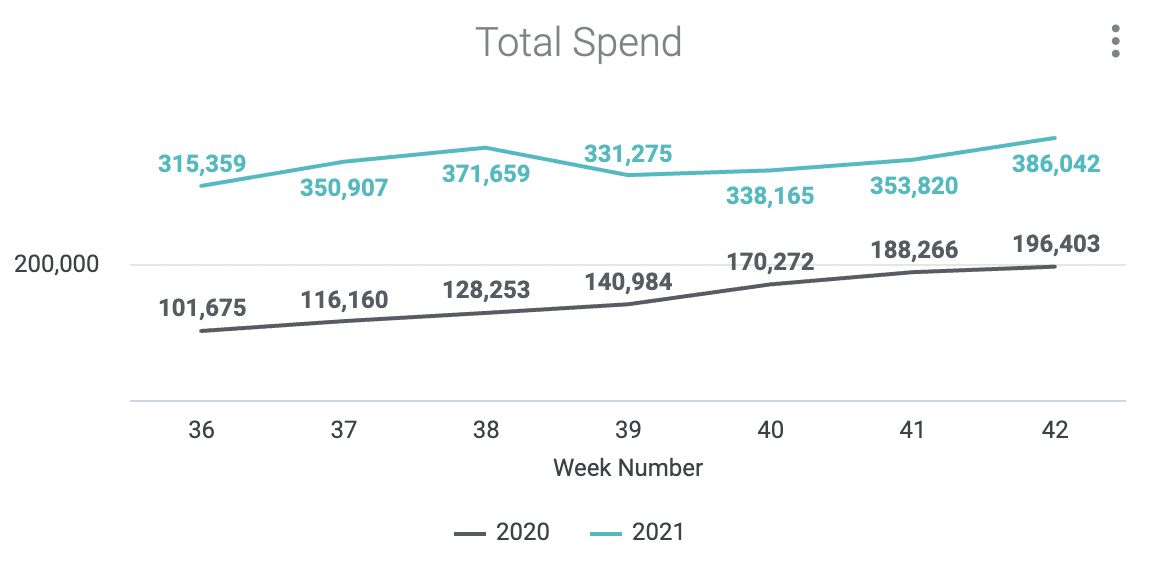 Cover counts and guest spend are both trending upwards year-over-year at this Italian fine dining institution.
Cover counts and guest spend are both trending upwards year-over-year at this Italian fine dining institution.
These performance reports are equally valuable for on- and off-premise applications, providing the insights that enable you to focus your time where it matters most. For example, online ordering management reports can help operators optimize their delivery and takeout businesses with:

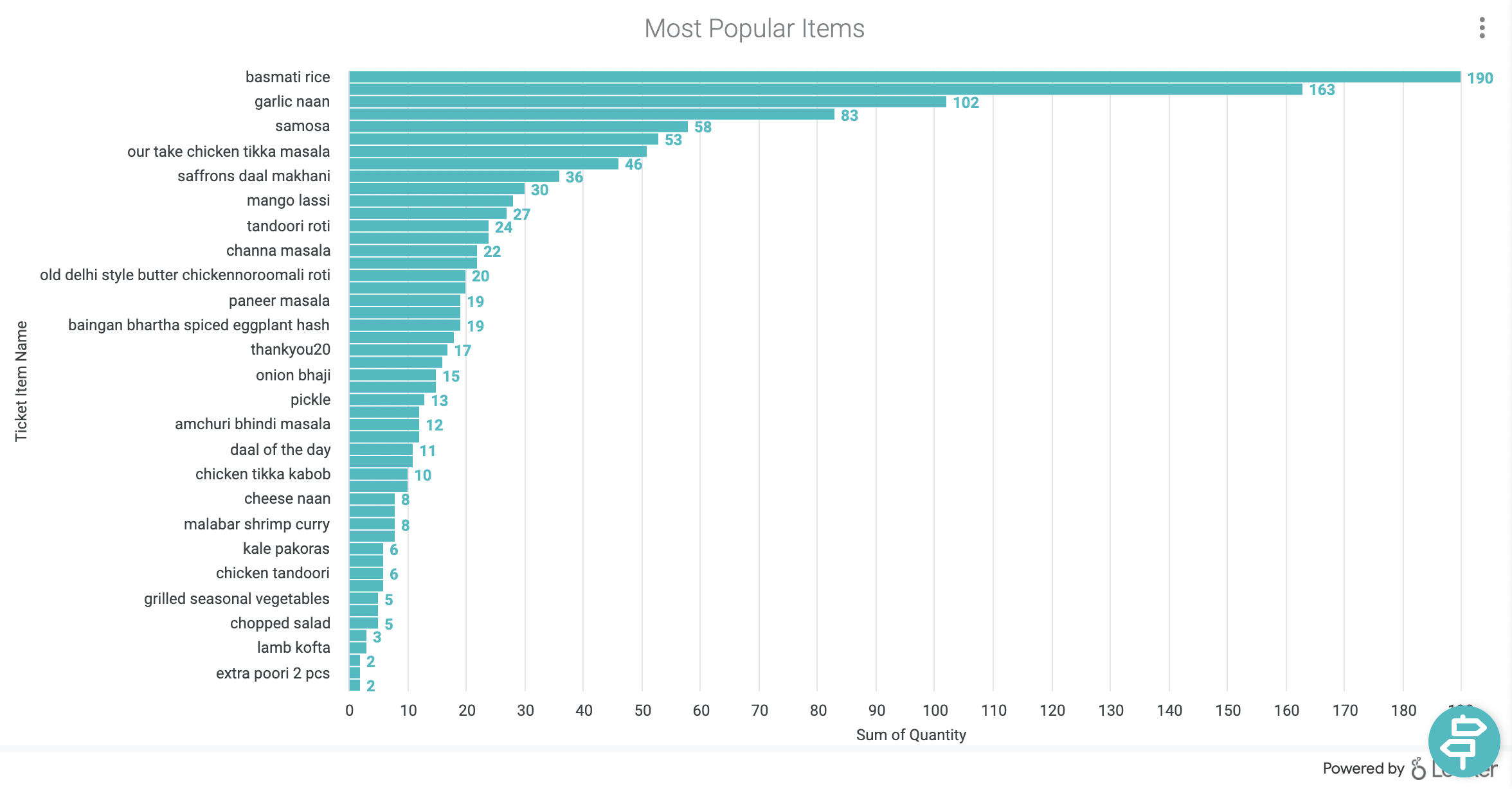 These reports could prompt this popular Indian restaurant to create new lunch specials, market a weekday-only promo code, or remove lamb kofta from their menu.
These reports could prompt this popular Indian restaurant to create new lunch specials, market a weekday-only promo code, or remove lamb kofta from their menu.
During a busy shift, no one would purposefully seat a solo diner at a table that can accommodate four, or suggest that a party of two make themselves at home in a private dining room that fits twenty. That’s because basic intuition dictates that the more seats a restaurant can fill, the more revenue it can generate. And as anyone who has ever managed a restaurant waitlist can attest, every minute that a seat or barstool sits empty has an associated cost.
With these ideas in mind, savvy operators work to maximize their so-called “capacity utilization” – the measure of how many seats in the restaurant are full at any given time. While there are many factors that influence this number, it can be a helpful shortcut to first look at the party size distribution in your reservations report:
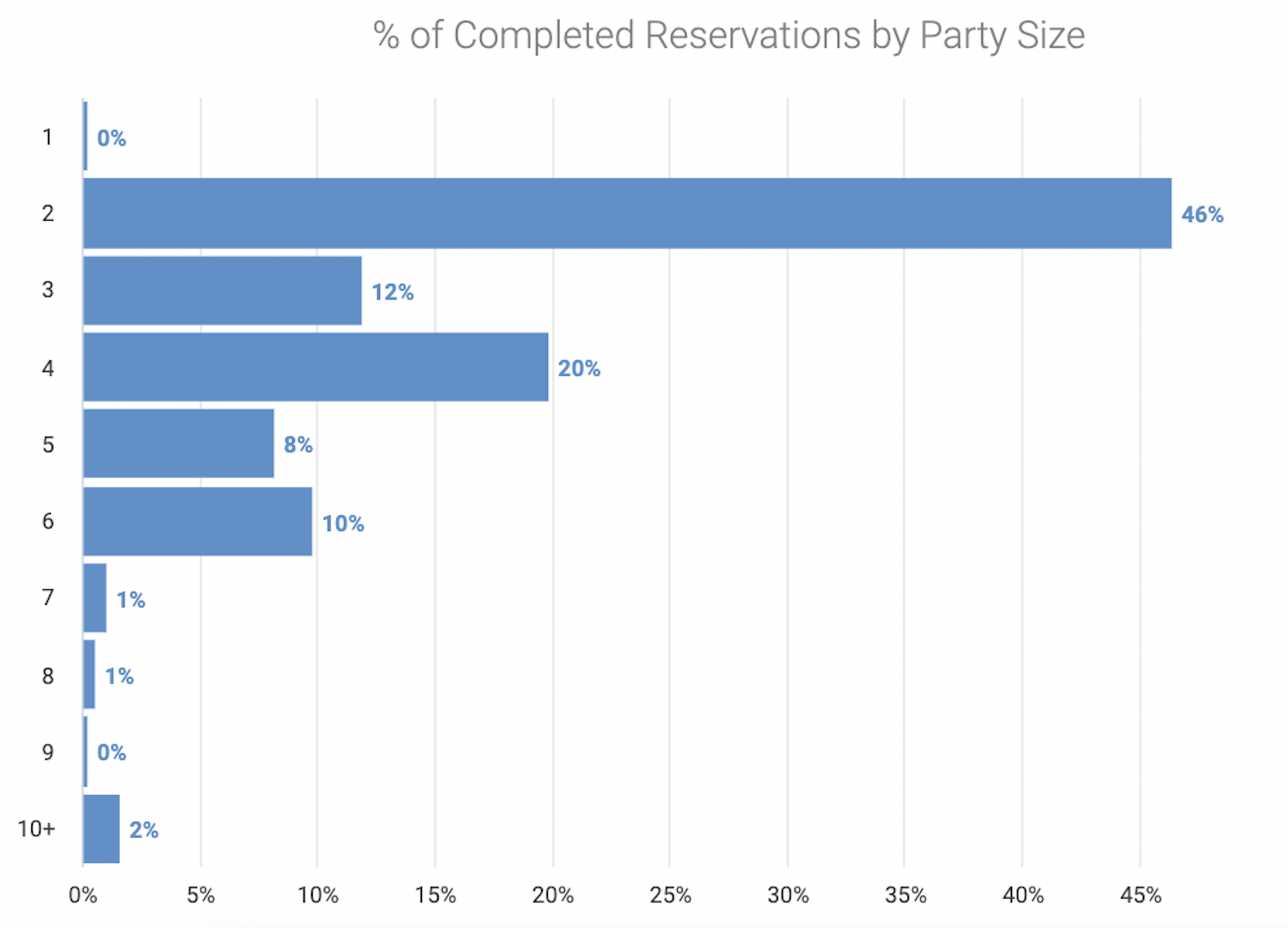 One popular NYC steakhouse saw as many as 46% of their reservations on recent weekends booked by parties of 2. Lowering that number in favor of larger parties could have a substantial impact on their bottom line.
One popular NYC steakhouse saw as many as 46% of their reservations on recent weekends booked by parties of 2. Lowering that number in favor of larger parties could have a substantial impact on their bottom line.
Since increasing capacity utilization is one of the most profitable ways to grow, reducing parties of 2 in favor of parties of 3 or larger is almost always an effective strategy. This can be done in multiple ways: restricting the times that a party of 2 can book, restricting those parties to certain tables or setting different table capacities during low-demand versus high-demand times.
Example: The venue above seated 100 reservations on average every Friday and Saturday, with 46% of those being parties of 2. By restricting availability for parties of 2 to book from 6-8 pm, they reduced the parties of 2 from 46% to 36% of their reservations. As a result, more parties of 3 and 4 were able to book, increasing total guest counts by 10%, an additional 15 to 20 guests per night.
Busy restaurants don’t have trouble filling their dining room on a Saturday night at 7:30pm, so why should they have to pay to do so? A direct reservations platform like SevenRooms allows operators to stop paying for third-party covers that ought to be free. One quick and easy way to trim the fat is to only accept direct bookings during prime times, while restricting your availability on third-party channels to shoulder times like 5:30pm or 9:30pm.
This strategic approach to channel management works on two levels, rewarding guests who book direct and reducing per-cover fees by paying only to fill your lower-demand time slots. Operators can get a sense of how well they are achieving these goals by referencing the part of their reservations report that displays covers by channel.
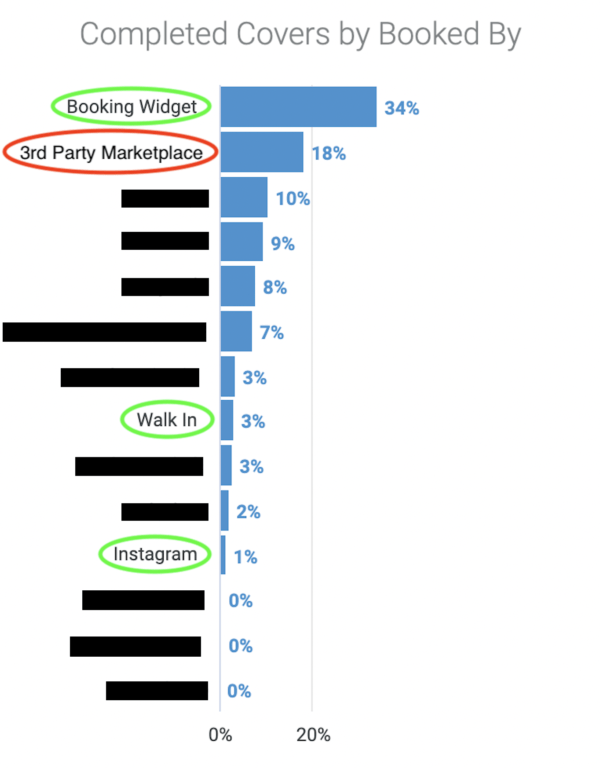 Operators should aim for the majority of reservations to come through direct, owned channels like the booking widget on their website and social media profiles.
Operators should aim for the majority of reservations to come through direct, owned channels like the booking widget on their website and social media profiles.
Example: More than a third of this Miami Korean restaurant’s reservations are being made through direct channels, a good sign. But they are also paying for roughly 1 in every 5 covers, the cost of so-called “discovery reservations” made via third-party platforms. Additionally, they may wish to shift availability to accommodate more walk-ins. By collecting contact information from walk-in guests through a virtual waitlist, operators can grow their marketing database in an effort to keep them coming back.
Even the most comprehensive reports are only useful if you actually run them. But with so many teams understaffed, finding the time for that can be easier said than done. That’s why the best restaurant reporting software makes it easy to filter, send and schedule reports. By automating this process, operators save valuable time while still being able to keep a close eye on their businesses.
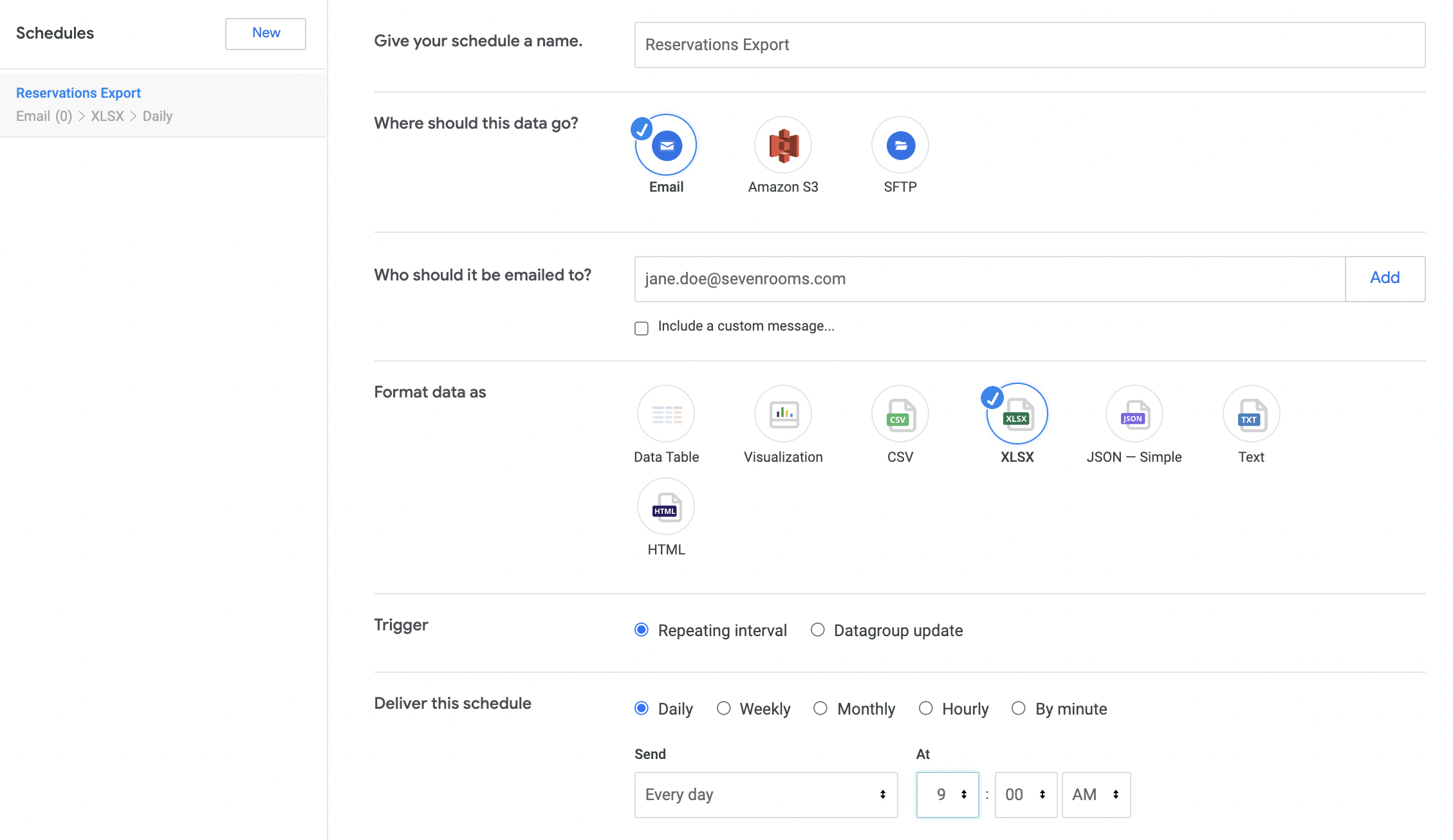 By scheduling a comprehensive reservations report to be sent automatically to their inbox each morning, this operator is able to keep their finger on the pulse of their business.
By scheduling a comprehensive reservations report to be sent automatically to their inbox each morning, this operator is able to keep their finger on the pulse of their business.
This is really just the tip of the iceberg, as robust reporting software can help restaurants streamline their operations, improve guest experience and make data-driven decisions about table management, staffing, marketing efforts and more.. Waitlist management reports provide actionable insights into quote accuracy, average wait times, abandonment rates and return times, no-show and cancellation reports can be leveraged to turn truant guests into regulars.
Book a demo to learn how SevenRooms can set your business up for success with these powerful tools today.